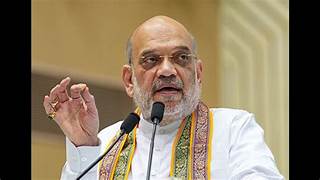
GST Rate Rationalisation: Home Minister Amit Shah to Initiate Consensus-Building Talks

 :
| Updated On: 14-Jul-2025 @ 12:04 pm
:
| Updated On: 14-Jul-2025 @ 12:04 pmSHARE
To accelerate reforms in India’s Goods and Services Tax (GST) regime, Union Home Minister Amit Shah is set to initiate consultations with states and central ministries. This effort aims to build consensus on contentious issues, especially the proposal to eliminate the 12% GST slab, a matter pending for years. The plan involves moving certain goods currently taxed at 12% to either the 5% or 18% slabs, simplifying the current five-tier GST structure. However, this rationalisation could cause a revenue loss of ₹70,000–80,000 crore for both the Centre and the states, making it a politically sensitive issue.
The GST system, introduced in July 2017, features a complex rate structure—0%, 5%, 12%, 18%, and 28%—along with additional cesses for luxury and sin goods, and exceptions for precious metals. Efforts to reform these slabs have repeatedly faced opposition in the GST Council, which comprises representatives from both the Centre and states. States ruled by both the BJP and Opposition parties have resisted rate restructuring due to potential financial losses. Moreover, two Opposition-led states have demanded lowering GST on life and health insurance premiums from 18% to 5%, while others have called for exemptions entirely.
Sources indicate that Amit Shah’s involvement is intended to resolve such politically sensitive issues and secure state support for proposed changes. Last week, he reportedly met Finance Ministry officials to discuss key GST matters. His role is being seen as essential when critical decisions extend beyond the Finance Ministry, particularly when there’s a possibility of voting within the GST Council. Shah has previously intervened in politically significant matters like disinvestment and food inflation, lending weight to this current initiative.
A major concern is that any structural changes, especially after eight years of relative stability in GST implementation, are unlikely to be straightforward. The 12% GST slab currently applies to various packaged foods (e.g., condensed milk, nuts, sausages, fruit juices), household goods (e.g., cotton/jute bags, furniture, stationery), and medical supplies (e.g., oxygen, diagnostic kits). Reassigning these items into other slabs requires careful consideration to avoid disruptions or inequities in pricing.
Data from 2023–24 indicates that about 70–75% of GST revenue comes from the 18% slab, 5–6% from the 12% slab, 6–8% from the 5% slab, and 13–15% from the 28% slab. Given this distribution, eliminating the 12% slab would have wide-reaching fiscal implications.
In past GST Council meetings, discussions have often stalled. For instance, during its 45th meeting in September 2021, the Council proposed rationalising rates and correcting inverted duty structures. It approved changes in sectors like textiles and footwear, implemented from January 2022. However, the 12% slab was retained, which some viewed as inconsistent with the goal of simplification. The ministerial panel was then asked to revisit the proposal.
In its 55th meeting in Jaisalmer in December 2024, the GST Council deferred a key decision to reduce GST on insurance premiums. The Group of Ministers (GoM) on rate rationalisation sought more time to review proposed rate changes on 148 items. These proposals are expected to be tabled again in the next GST Council meeting, which will be crucial in determining the future of GST reforms.